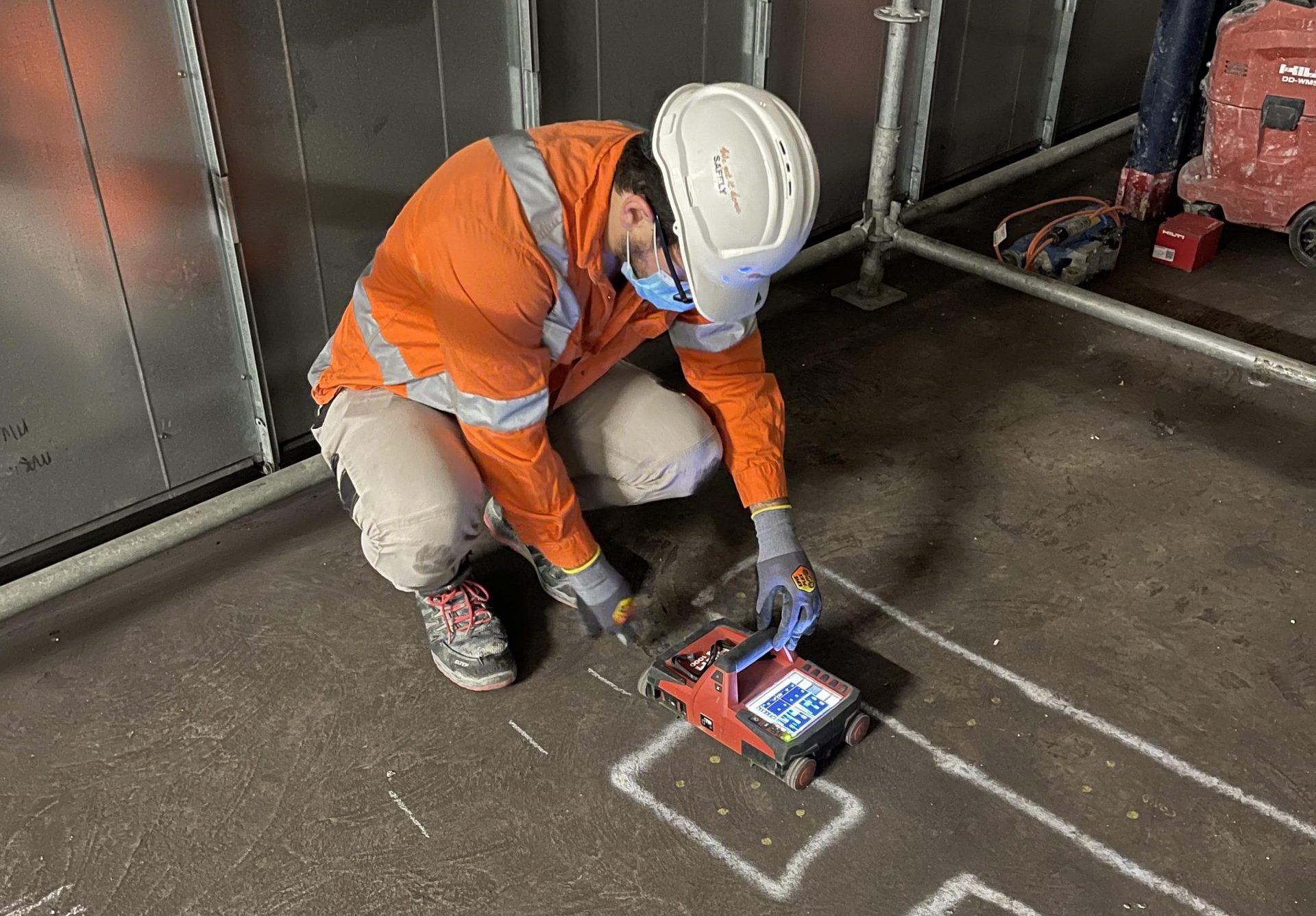Unveil the Transformative Power of Concrete Scanning in Making The Most Of Effectiveness and Security
Concrete scanning has actually arised as an essential tool in the building sector, supplying unrivaled benefits in improving job effectiveness and ensuring security requirements. The transformative power of concrete scanning exists in its capability to provide in-depth understandings and real-time data, transforming exactly how projects are planned and performed.
Significance of Concrete Scanning
Making certain the structural stability and safety of building and construction projects starts with the crucial action of conducting complete concrete scanning. Concrete scanning is a non-destructive approach utilized to spot and map subsurface elements within concrete frameworks. This process is important in recognizing possible dangers, such as rebar, post-tension cable televisions, and conduits, that might be concealed within the concrete. By using innovative technologies like ground-penetrating radar (GPR) and electro-magnetic induction, building and construction groups can properly locate these aspects without creating any type of damage to the structure.
Furthermore, concrete scanning assists in enhancing job timelines and budget plan by preventing unforeseen prices and hold-ups that might occur due to unanticipated blockages within the concrete. Eventually, spending in detailed concrete scanning is a positive technique that enhances both efficiency and security in building tasks.
How Concrete Scanning Works
Concrete scanning runs as a vital device in building and construction jobs by employing advanced modern technologies to find and map subsurface aspects without triggering architectural damages. Ground Passing Through Radar (GPR) and Electromagnetic Induction (EMI) are 2 main techniques utilized in concrete scanning. GPR works by discharging high-frequency radar pulses into the surface, which recuperate when they experience subsurface objects or spaces. The moment considered the signal to return shows the deepness and place of the objects. EMI, on the various other hand, utilizes electro-magnetic fields to determine variations in product structures, such as determining rebar or channels within concrete structures.
Throughout the scanning procedure, the information collected is evaluated in real-time, enabling prompt identification of prospective threats or challenges beneath the surface area. By using these advanced technologies, concrete scanning considerably decreases the danger of pricey problems and injuries on building websites.
Benefits of Concrete Scanning
Making use of advanced scanning modern technologies in building and construction jobs offers a wide variety of advantages, boosting both efficiency and safety and security on-site. One of the main advantages of concrete scanning is the capability to discover and locate embedded items such as rebar, post-tension cable televisions, and conduits properly. By identifying these elements prior to drilling or cutting right into concrete frameworks, the risk of unexpected strikes is significantly decreased, protecting against potential injuries to workers and damages to the framework itself. Additionally, concrete scanning helps in planning and designing extra effectively, as it provides specific info regarding the location and deepness of architectural elements.

Study: Concrete Scanning Success

In another instance, a building and construction business utilized 3D concrete scanning to assess the problem of aging concrete structures in a historic building. The comprehensive scans provided beneficial understandings right into the level of deterioration and aided focus on upkeep initiatives properly. By proactively attending to areas of concern recognized with scanning, the company had the ability to extend the life-span of the structure and make sure occupant safety.
These study emphasize the transformative power of concrete scanning in boosting efficiency, accuracy, and safety in building tasks.
Implementing Concrete Scanning in Projects
Carrying out advanced scanning innovations during construction jobs has actually ended up being progressively necessary for improving precision and safety and security. By integrating concrete scanning right into task preparation and implementation, building and construction groups can recognize possible threats, such as rebar or post-tension cables, hidden within concrete structures. This aggressive approach lessens the danger of crashes, hold-ups, and costly rework, ultimately resulting in a lot more effective project timelines and budgets.
To execute concrete scanning successfully, job supervisors ought to work together carefully with skilled scanning professionals to establish one of the most appropriate scanning strategies for the specific job needs. Involving scanning professionals from the onset of a task allows great post to read the team to create extensive scanning plans that resolve essential areas of worry and make certain extensive data collection.
Additionally, integrating concrete scanning into routine task operations can enhance decision-making processes, as real-time check data provides immediate insights into the condition of concrete frameworks - Concrete Scanning. This data-driven strategy promotes notified problem-solving and enables groups to make modifications promptly, promoting a society of effectiveness and safety and security throughout the job lifecycle

Final Thought
In verdict, concrete scanning plays a vital role in improving performance and security in building and construction jobs. By utilizing innovative innovation to spot and map out underlying structures within concrete, this procedure helps to avoid pricey mistakes, guarantee structural integrity, and reduce dangers on site. This Site With the ability to uncover hidden elements and offer precise information, concrete scanning proves to be a useful device for maximizing project end results and making the most of total success.
Concrete scanning is a non-destructive technique made use of to discover and map subsurface aspects within concrete structures. In addition, concrete scanning assists in enhancing task timelines and budget by staying clear of unforeseen costs and delays that might occur due to unforeseen obstructions within the concrete. One notable situation research entails a massive improvement job where concrete scanning played a critical role in making sure task success.In another instance, a building and construction company made use of 3D concrete scanning to evaluate the condition of aging concrete frameworks in a historic building. By integrating concrete scanning right into project planning and execution, building and construction groups can identify prospective threats, such as rebar or post-tension cable televisions, concealed within concrete frameworks.